|
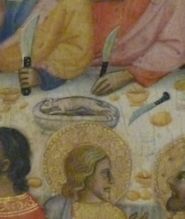 Dwight Peck's personal website Dwight Peck's personal website
Scenes of Bologna, 2014
The venerable city of porticos, towers, and canals in the springtime
Kristin's come up from Rome, I've come south from Switzerland, and we're dashing all round Bologna's city streets, anxious not to miss a thing. 27 May 2014.
    
You may not find this terribly rewarding unless you're included here, so this is a good time for casual and random browsers to turn back before they get too caught up in the sweep and majesty of the proceedings and can't let go.

We've settled into our new Wifi-equipped room on the Bologna canals, and now, bright and early the next mid-morning, hurrying to get to the Breakfast Chambers in the basement, we pause to monitor the pigeons' nest on the air-conditioner on the other side of Il Canale.

This is the canal called the Torrente Aposa, now mostly underground and used largely for drain water (no more colorful, merry gondoliers serenading their way through the city), seen from our room . . .
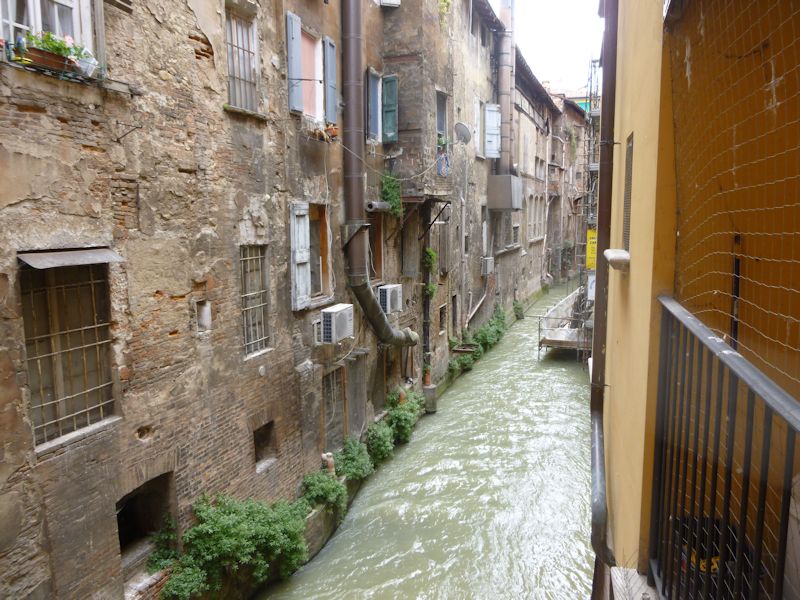
. . . and from our bathroom. (No, put that out of your mind. It's just river drain water.)
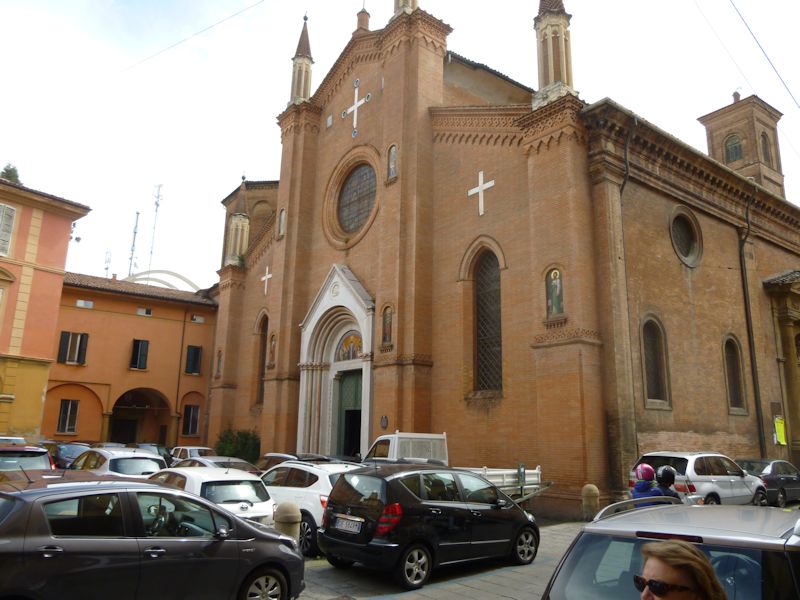
The Chiesa di San Martino, founded in 1217, though the façade is from the 19th century.

Trompe-l'oeil statues on the walls of this chapel, and its dome as well

San Martino

Ack!

There is a pattern here.

Wham.

Pacing the cloister of the San Martino church

A lot of grim history here. The San Martino church was originally part of a Carmelite monastery.

Decorative!
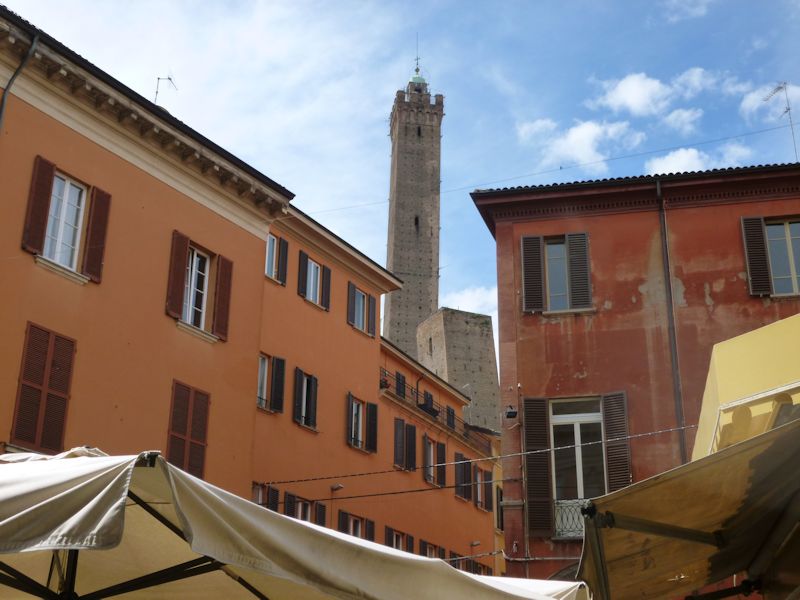
The Due Torri

We're back at the Basilica of San Giacomo Maggiore

More frescoes along the outside walls

Oh no, it can't be.

The nave with a lot of chapels along the sides, including the Bentivogli chapel from the mid-15th century
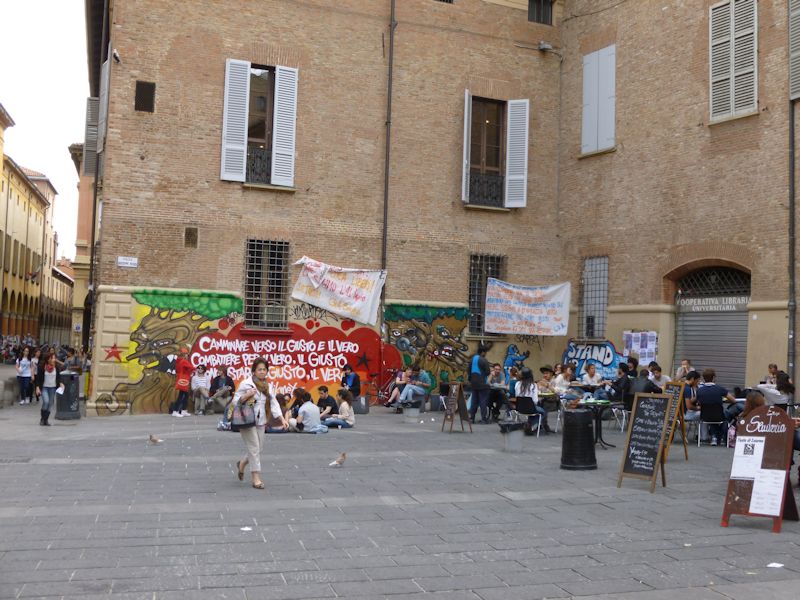
We're headed up the Via Zamboni, through the university quarter, to the art gallery; past the Piazza G. Verdi again: political sentiments everywhere.
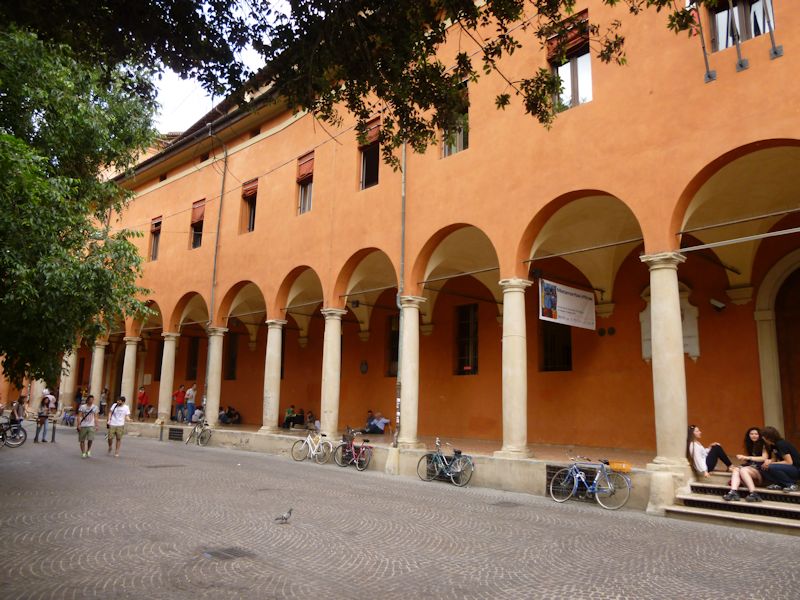
This time the Pinacoteca Nazionale is promised to be open. We'll see.

Ooof. There is a certain something about Christian art.
(Martyrdom of St. Christina, by the "Pseudo-Jacopino", 1329)

This is for our "What were they eating at the Last Supper?" collection -- strengthening the consensus view that, in addition to some bread or a few biscuits, they were sharing one rat (by Andrea di Bartolo, ca. 1420). [Compare this rat by Alonso Vazquez, now in Seville.]

More of the Gloom and Doom, 'off you go to Eternal Payback', thread of Christianity (by the Maestro dell'Avicenna, ca. 1435). Compare this frightful thing to . . .

. . . this flight of the imagination in the Chapel of the Magi in the San Petronio Basilica down the street. A lot of these people seem to have thought alike.

The world's ugliest Madonna
(detail from the Croce Sagomata of the Madonna, Saints John and Christina, and a Pelican)

Like all of the Old Martyrs, Saint Apollonia would like to remind us of her sorry fate -- getting all her teeth pulled out, for some reason, in 3rd century Alexandria. (There are two sides to every story.) In some paintings, that tooth she's holding is glowing supernaturally. She's known as the patron saint of dentistry (intended as a joke?), and in medieval times millions of her teeth were sold as a toothache cure.
(ca. 1488, by the Master called Ambrogio the Saracen)

More evidence in the "Was God a She?" controversy, on the side of "probably not"
(Padre eterno, 1524, by Lodovico Mazzolino, 'Il Ferrarese')
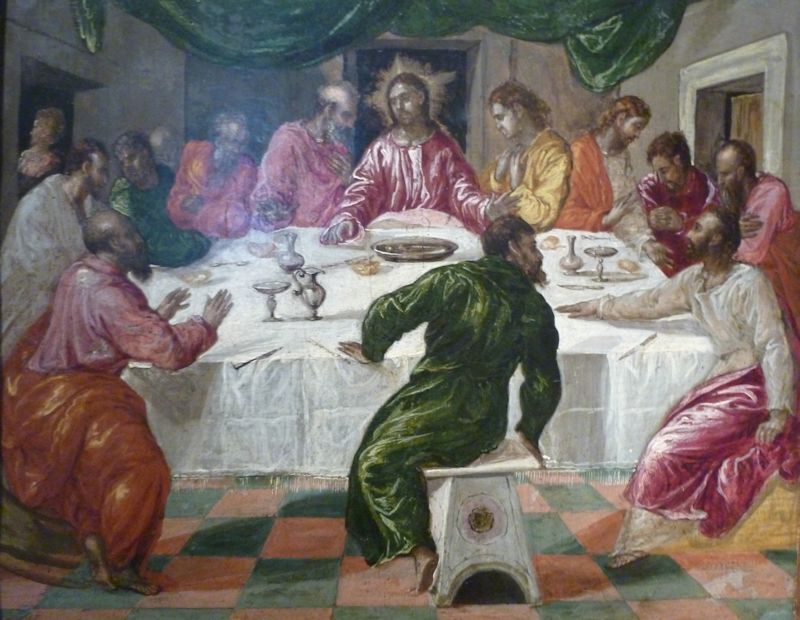
El Greco's take on the "rat for dinner" controversy (ca. 1567)

Kristin cruising through the Pinacoteca Nazionale

The Annunciation . . . but . . . way underage! Disgusting. (Lodovico Caracci, ca. 1584)

-- I'm not dead yet.
(Actually just a "newborn in a crib", by Lavinia Fontana, called the first female artist in the open art market [a generation prior to Artemisia Gentileschi], 1583)

This goes with our Judith and Holofernes beheadings collection (but it ain't no Artemisia Gentileschi).
(by Guido Cagnacci, ca. 1640).
More entries for our "Mary Magdalene (saint or sinner?)" collection [but there's nothing quite like this Donatello version, yikes] (these are by Giuseppi Crespi and Giangioseffo Dal Sole)

The picture on the left is Guido Reni's famous portrait of his mother. The big overstated heroic thing is also by Gui . . . no, wait! It's a portrait OF Guido Reni! (by his student Simone Cantarini, 1635).
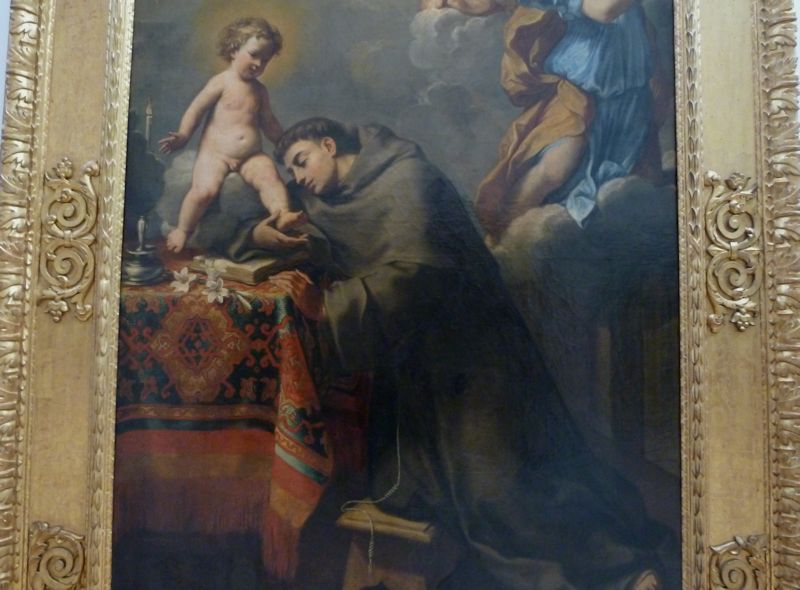
If that kid's parents get a good lawyer, they're going to make some serious money.
(St Antonio of Padua, by Elisabetta Sirani, 1662 [who's got her own very interesting Judith and Holofernes' head painting][and she's buried in Bologna in the tomb with Guido Reni. By the way.])
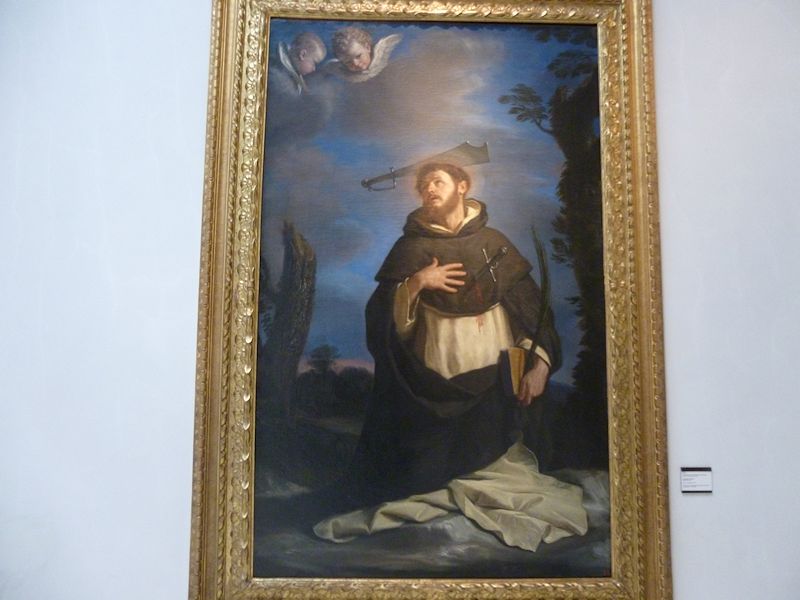
This is for our Saints with Machete Hats collection (St Peter of Verona, by Il Guercino [G. F. Barbieri], c. 1646)

-- Can't you kids keep that thing quiet?
(Detail from the Mystical marriage of St Catherine and saints Barbara and Marguerita, Alessandro Tiarini, ca. 1620)

-- No way! That's Guido Reni?

The San Donato old city gate in the walls, at the northeast corner of the city, near the university district

Street scene
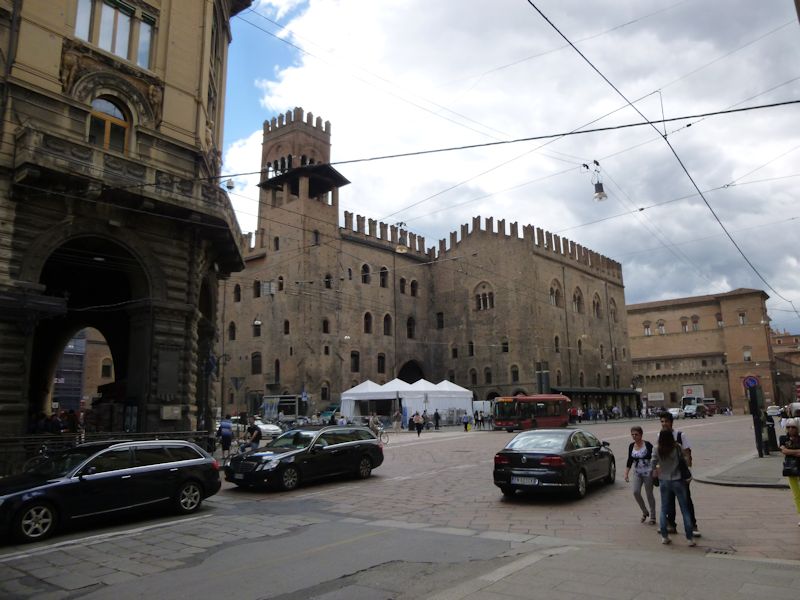
Back to the city-centre: the Piazza Maggiore and the Palace Re Enzo and Palace of the Podestà

The Neptune Fountain, in the Piazza Nettuno connected with the Piazza Maggiore -- the bronze Neptune is by Giambologna, ca. 1567, commissioned by Cardinal Borromeo (the wily Counter-Reformation enthusiast whose islands still bejewel Lago Maggiore).
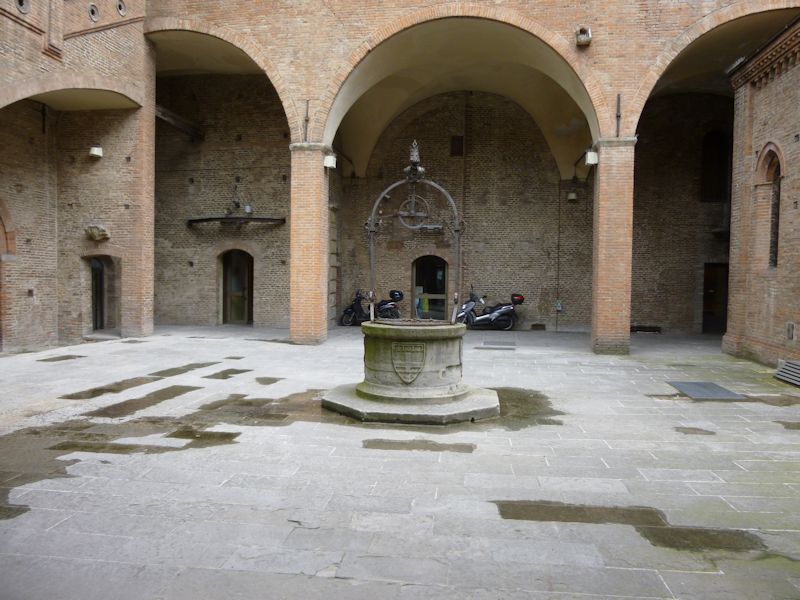
A leaky cistern

We're looking for the City Art Collections (Collezioni Comunali d'Arte) just next door

Here we are. Luckily, the queue is fairly short.

"No Photos" in the galleries, but this is out of them. Facing the Neptune Fountain (right), the Palazzo Re Enzo, ca. 1245, is named for Enzo, a wrong-side-of-the-blanket son of "Stupor Mundi", the Holy Roman Emperor Frederick II, the "Swabian", who named his son the King of Sardinia. He campaigned on Dad's behalf against the Pope-supporting Guelph cities (and captured a papal fleet in 1241 at Giglio Island, where modern cruise ships overturn), but in 1249 he was captured defending Modena against Guelph Bologna and locked up right here, and kept prisoner until his death in 1272 (thus the name of the palace).
Despite King Enzo's close captivity, he managed to father a number of illegitimate children, and Bologna's premier 15th century family of the Bentivoglio claimed to have descended from him. When Stupor Mundi's teenaged grandson Conradin (Duke of Swabia, King of Jerusalem, King of Sicily, etc., etc.) was murdered in Naples in 1268, Enzo was the last survivor in the Hohenstaufen imperial line. For four years. Then poof!

-- Now that is a very impressive skull! I think I'm in love.
(Ubaldo Gandolfi, Mary Magdalene & St Joseph; just good friends)
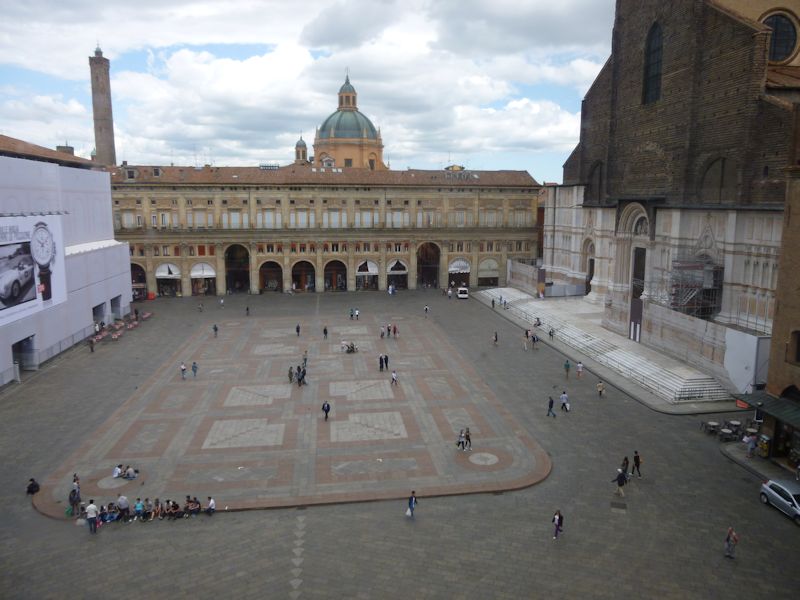
The Piazza Maggiore: Palazzo del Podestà shrouded on the left, St Petronius on the right.

Neptune, showing us The Swagger
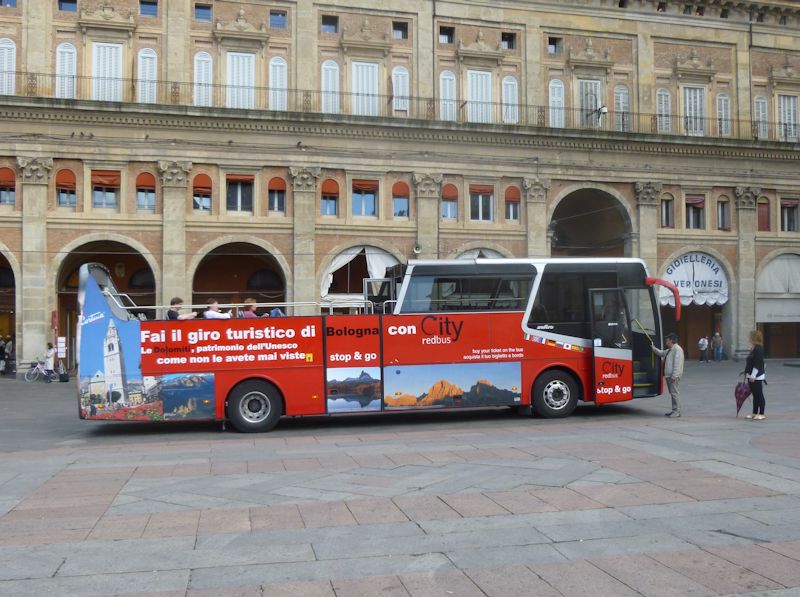
The city tourist bus, a disappointment. When we arrived at the Bologna train station a few days ago, I glimpsed a lovely Dotto Euro 5 "Muson River 1894" road train, but my camera was packed away in the wheelie and we've been looking for that bus ever since.
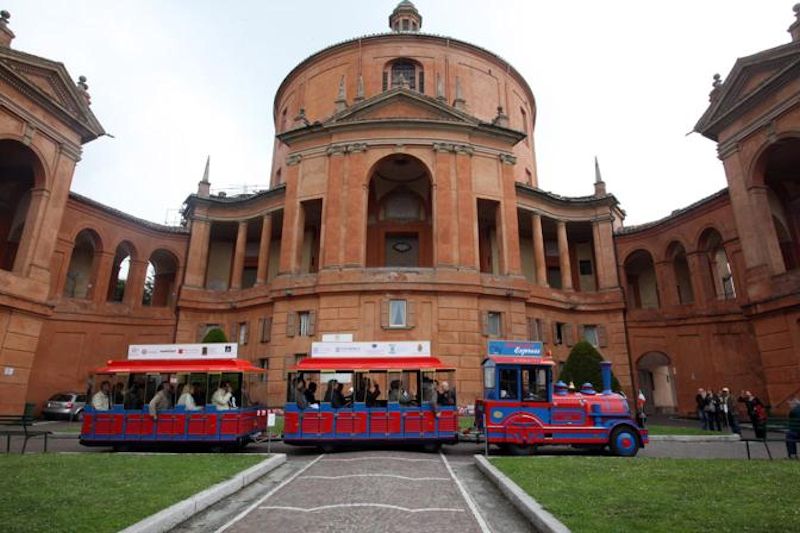
This is it -- in a photo stolen from the San Luca Express webpage. It's a dedicated tourist train to the Sanctuary of the Madonna di San Luca up the hill a ways.

Piazza Maggiore street scene

A police presence (just routine)

Oh the Veggie Market. Both biological AND ethical. But we were thinking more along the lines . . .

. . . of the Conad City down the street, with its ample collection of less-ethical sustaining items for the hotel in the evening.

Kristin's never met an Italian menu that's not worth scrutiny.
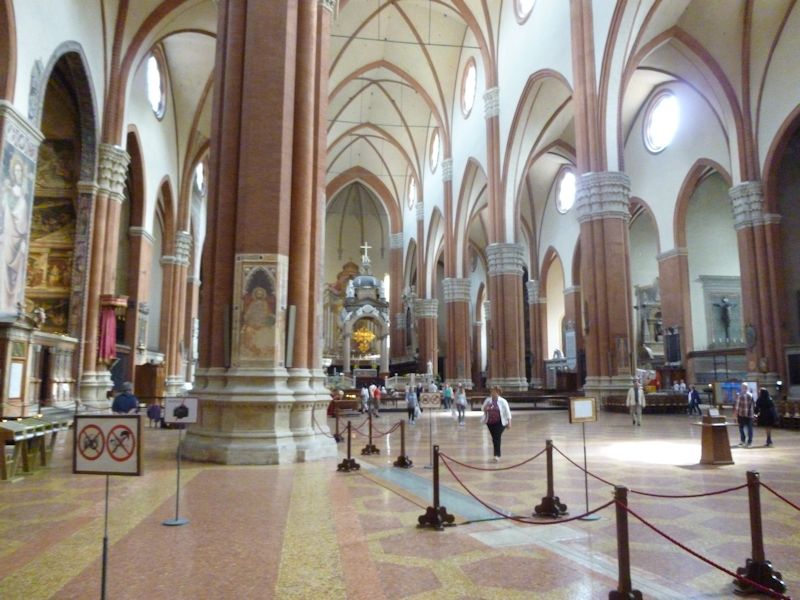
A peek into San Petronius ("No Photo!"). We'll be back.

Back to our room on the Torrente Aposa
    

 Feedback
and suggestions are welcome if positive, resented if negative, Feedback
and suggestions are welcome if positive, resented if negative,  .
All rights reserved, all wrongs avenged. Posted 3 July 2014. .
All rights reserved, all wrongs avenged. Posted 3 July 2014.
|
 Dwight Peck's personal website
Dwight Peck's personal website 

























































